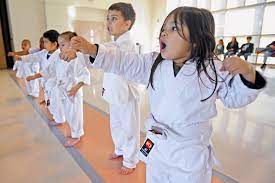Introduction
The world of martial arts is as diverse as it is fascinating, offering a rich tapestry of history, culture, and physical expression. From the powerful kicks of Taekwondo to the precise punches of Boxing, each martial art has its unique identity and philosophy. This journey through various martial arts styles will highlight the distinctive techniques and traditions of each and the universal values they share, such as discipline, respect, and self-improvement.
The Origins and Evolution of Martial Arts
The Historical Roots
Martial arts have ancient origins, with evidence of their practice dating back thousands of years in different parts of the world. These practices have evolved over centuries and were initially developed for self-defence, military needs, and hunting. Ancient civilisations contributed significantly to the martial arts, adding unique techniques and philosophies.
Evolution and Global Spread
The global spread of martial arts began with trade, migration, and conquests, leading to the exchange of knowledge and cultural fusion. The 20th century saw an explosion in popularity worldwide, thanks to increased media exposure. Movies, television, and the internet played pivotal roles in introducing martial arts to global audiences, turning them from regional practices into international phenomena.
The Diversity of Martial Arts Styles
Striking Arts: Boxing and Muay Thai
Boxing: The Sweet Science
Boxing focuses on punch combinations, footwork, and strategy. It emphasises agility, speed, and endurance, with athletes training to deliver powerful punches while avoiding opponents.
Muay Thai: The Art of Eight Limbs
Muay Thai utilises punches, kicks, elbows, and knee strikes, making it a more comprehensive striking system than Boxing. It’s renowned for its toughness and the emphasis on conditioning.
Kicking Arts: Taekwondo and Capoeira
Taekwondo: The Way of Foot and Fist
Taekwondo is famous for its dynamic kicking techniques, including spinning and jumping kicks. It’s a physical discipline and a way to develop the mind and character, promoting peace and discipline.
Capoeira: Dance Meets Combat
With swift, powerful kicks. It was developed as a form of resistance, and the training was disguised as dance movements.
Grappling Arts: Judo and Brazilian Jiu-Jitsu
Judo: The Gentle Way
Judo, meaning “the gentle way,” focuses on throws and takedowns to immobilise or subdue the opponent. It emphasises using an opponent’s force against them, promoting physical and mental harmony.
Brazilian Jiu-Jitsu: The Chess Game of Martial Arts
Brazilian Jiu-Jitsu (BJJ) evolved from Judo and focuses on ground fighting and submission holds. It teaches that a more minor, weaker using leverage and proper technique.
The Shared Philosophy of Martial Arts
Discipline and Respect
Discipline is a cornerstone of all martial arts. Practitioners learn to control their minds and bodies, pushing through limits to achieve higher skill levels. Respect for teachers, peers, and art is paramount, creating a positive and supportive environment.
Self-Improvement and Empowerment
Martial arts are not merely about the physical act of fighting; they represent a journey towards self-improvement and personal growth. They instil vital life skills such as persistence, humility, and the relentless pursuit of excellence. Beyond the physical benefits, many individuals discover a profound sense of empowerment through martial arts. This empowerment manifests as increased confidence and inner strength, attributes that individuals carry into their daily lives, positively impacting their interactions and decision-making processes.
The Path to Peace
Ironically, many martial artists find peace and tranquillity by learning the art of combat. The rigorous training regimen, strict discipline, and profound philosophical teachings in martial arts lead to significant personal growth, heightened self-awareness, and a profound appreciation for peace and harmony. Individuals develop a serene mindset through mastering various techniques and overcoming physical and mental challenges. This allows them to approach life’s conflicts with calmness and serenity, fostering a sense of peace within themselves that radiates outward, influencing their relationships and promoting a more harmonious world.
Conclusion
The journey through the diverse world of martial arts is a testament to the human spirit’s resilience, creativity, and quest for harmony. Whether through the punches of Boxing, the kicks of Taekwondo, the throws of Judo, or the strategic ground game of Brazilian Jiu-Jitsu, martial arts offer a path for physical conditioning, mental discipline, and spiritual growth. By embracing the values shared across these disciplines, martial arts practitioners can find common ground, respect, and understanding, contributing to a more peaceful and interconnected world. For more information, visit this website.
